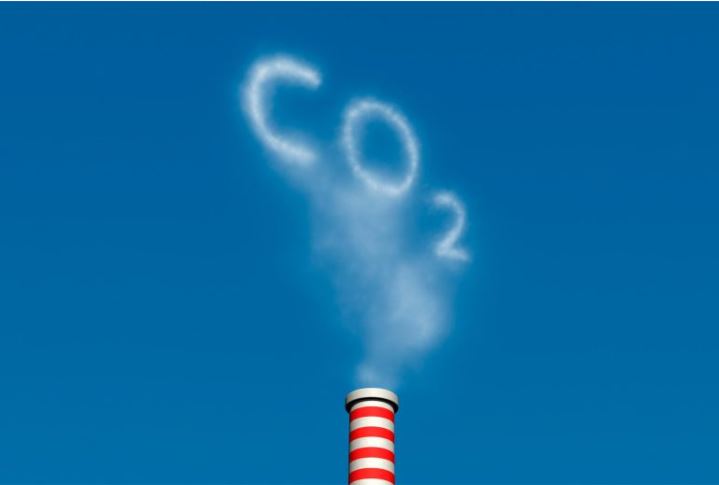


 10:40:52
10:40:52  2025-06-14
2025-06-14  1012
1012

Researchers have determined that the large-scale adoption of technologies designed to capture carbon dioxide from industrial emissions and the atmosphere would be significantly more costly and environmentally harmful than a global transition to renewable energy sources for electricity and heating.
Switching entirely to clean energy sources like wind, solar, geothermal, and hydropower by 2050 could transform the future for most countries. A recent study published in Environmental Science & Technology finds that this shift would not only cut energy costs and reduce overall energy demand but also dramatically improve air quality and slow the pace of climate change.
The researchers report that these benefits could be achieved at a much lower cost compared to relying on expensive technologies designed to capture carbon dioxide (CO₂) from the air or from industrial smokestacks.
“If you spend $1 on carbon capture instead of on wind, water, and solar, you are increasing CO2, air pollution, energy requirements, energy costs, pipelines, and total social costs,” said lead study author Mark Jacobson, a professor of civil and environmental engineering in the Stanford Doerr School of Sustainability and Stanford School of Engineering.
This holds true even if zero-emission energy systems power the technology deployed to extract carbon dioxide, Jacobson added. “It’s always an opportunity cost to use clean, renewable energy for direct air capture instead of replacing a fossil-fuel CO2 source, just like it’s an opportunity cost to use it for AI or bitcoin mining. You’re preventing renewables from replacing fossil fuel sources because you’re creating more demand for those renewables,” he said.
Comparing two extremes
Jacobson and co-authors compared the annual energy costs, emissions, public health impacts, and social costs associated with implementing either of two extremes across all sectors in 149 countries over the next 25 years.
One extreme would see a complete switch to use heat and electricity generated by wind, solar, geothermal, and hydropower for all energy needs, as well as some advances in energy efficiency; cuts to energy demand through improved public transit, increased biking, and telecommuting; and commercialization of hydrogen fuel cells for long-distance air travel and shipping. For this case, the researchers assume hydrogen would be produced using water and electricity from renewable sources, not with fossil fuels, which is the way most hydrogen is made today.
The other extreme would see countries maintain their current reliance on fossil fuels with some renewables, nuclear, and biomass – while improving energy efficiency by the same amount as in the all-renewable case. In this second extreme, all 149 countries would also add equipment to capture carbon dioxide from industrial flues and use technology known as synthetic direct air carbon capture to pull CO2 from ambient air.
Comparing these two “unrealistically extreme cases,” the authors write, distills the climate, health, and social costs associated with investing money in carbon capture and direct air capture that might otherwise go toward electrification and wind, water, and solar power. Neither case considers the potential costs or benefits of efforts to enhance carbon sequestration in natural carbon sinks like wetlands, forests, soil, and oceans.
Benefits of eliminating combustion
Jacobson and co-authors found that if the 149 studied countries successfully eliminated fossil fuels and biomass combustion through renewables and efficiency gains by 2050, they could reduce their end-use energy needs by more than 54%. Annual energy costs, the authors concluded, would decline by nearly 60%. Hundreds of millions of illnesses and 5 million deaths per year related to air pollution from energy – whether from woodburning cookstoves and kerosene lamps or from gas-fired power stations – would be avoided.
“When you add wind turbines to replace a coal plant, you’re eliminating not only the CO2 but also the pollution from the coal,” said Jacobson, who is also a senior fellow at the Stanford Woods Institute for the Environment.
Widespread electrification reduces energy demand in part because electric heat pumps and vehicles are more efficient than gas heaters and appliances, conventional air conditioners, and internal combustion engines, Jacobson said. Other energy savings come from eliminating energy needed to extract, transport, and refine oil, gas, coal, and uranium.
“You can have the most efficient way of removing CO2 from the air, but that does not change the efficiency of combustion. You’re keeping that inefficient energy infrastructure the same,” said Jacobson. “It’s much cheaper and more efficient just to replace the fossil source with electricity or heat provided by a renewable source.”
Climate policies that promote expansion of renewables as well as carbon capture and direct air capture to deal with emissions from fossil fuels and biomass “do not distinguish between good and poor solutions,” and any policy promoting carbon capture and direct air capture “should be abandoned,” the authors write in the study. They add, “The only way to eliminate all air-pollutant and climate-warming gases and particles from energy is to eliminate combustion.”
Reality Of Islam |
|

Researchers

If you'

Imagine bei
 9:3:43
9:3:43
 2018-11-05
2018-11-05
10 benefits of Marriage in Islam
 7:5:22
7:5:22
 2019-04-08
2019-04-08
benefits of reciting surat yunus, hud &
 9:45:7
9:45:7
 2018-12-24
2018-12-24
advantages & disadvantages of divorce
 11:35:12
11:35:12
 2018-06-10
2018-06-10
 6:0:51
6:0:51
 2018-10-16
2018-10-16
 4:25:57
4:25:57
 2023-02-11
2023-02-11
 4:26:43
4:26:43
 2022-02-21
2022-02-21
 1:34:8
1:34:8
 2022-02-01
2022-02-01
 6:14:3
6:14:3
 2023-01-18
2023-01-18
 8:15:37
8:15:37
 2023-02-16
2023-02-16
 10:47:11
10:47:11
 2022-11-22
2022-11-22
allah will not answer all your prayers
 6:56:28
6:56:28
 2022-01-01
2022-01-01
 5:41:46
5:41:46
 2023-03-18
2023-03-18
| LATEST |